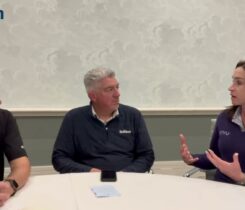Research looks for cost-effective methods to manage nematodes, fungal diseases

Scientists from the University of Florida research cost-effective control techniques for nematodes and fungal diseases. (Photo courtesy Marco Schiavon)
A research team at the University of Florida’s Institute of Food and Agricultural Sciences (UF/IFAS) will seek to will develop cost-effective methods for managing nematodes and fungal diseases. The team at UF said the research will benefit the turfgrass industry in Florida, Georgia and other parts of the Southern U.S.
“Sting and root-knot nematodes are major pests of turfgrass in the Southern United States,” said Abolfazl Hajihassani, a scientist at UF/IFAS. “The problem lies in that the combination of pests and diseases affect the growth and quality of the turfgrass. Management tools rely mainly on a limited number of expensive chemical fumigants and nematicides.”
Hajihassani, an assistant professor at UF/IFAS Fort Lauderdale Research and Education Center (UF/IFAS FLREC) is the principal investigator on a $471,201 grant awarded by the U.S. Department of Agriculture’s National Institute of Food and Agriculture.
Hajihassani’s team will conduct monthly samplings from five locations located throughout southeast and southwest Florida. Four of the sites are golf courses where nematodes are prevalent to monitor the population changes of these pests. The fifth location is the turfgrass testing field at UF/IFAS FLREC.
“The idea is to determine when nematodes are at the highest population near the top surface of the soil so that the nematodes can be better exposed to nematicides which in turn result in reduced population and turf damage,” said Hajihassani. “We are trying to detect fungal and bacterial secondary metabolites with the ability to control root-knot and sting nematodes and fungal diseases of turf.”
Seeking biological solutions to suppress the population of nematodes and fungal disease is another objective of the research. Hajihassani’s team will evaluate the economic profitability of the developed practices and implement extension and outreach activities.












